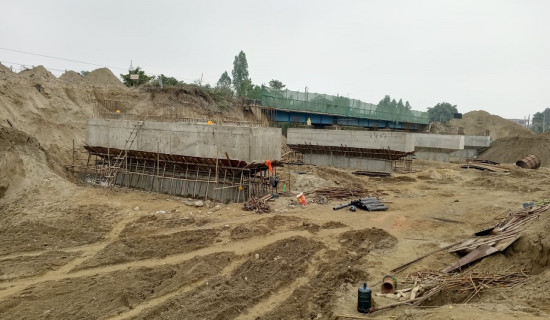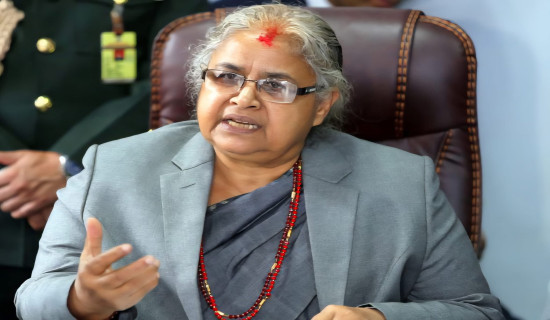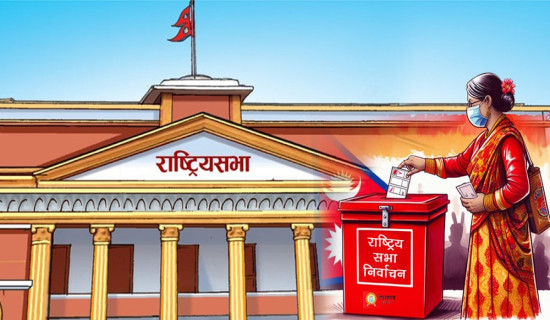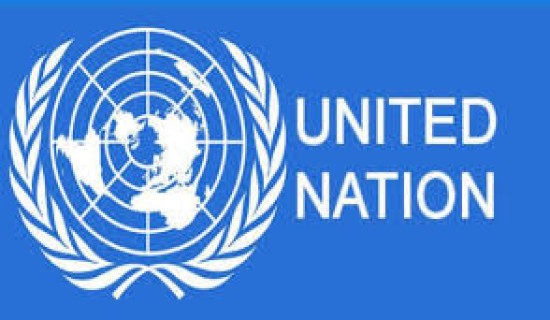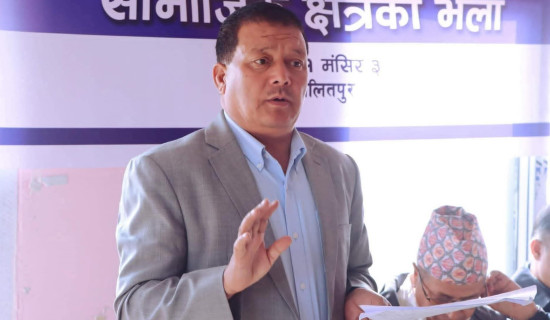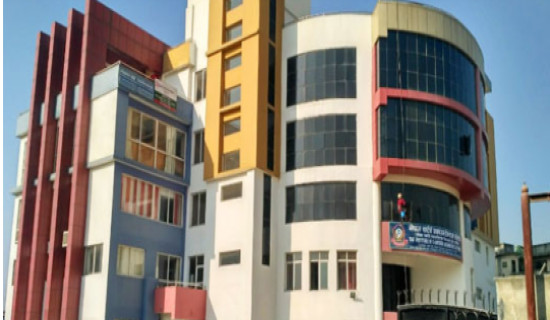- Wednesday, 7 January 2026
Census 2021 Results
Regional Demographic Shifts
Bhim Prasad Subedi
Demographically, unlike the past several decades, Nepal at present is neither characterised as a nation of young people nor that of aged ones but as one of a mature or adult population. Likewise, its population is not growing fast, and its growth rate has declined signIoicantly.
Geographically, Nepal is dominantly a hilly and mountainous country, and more than two-thirds of the country’s landscape is characterised by hills and mountains. But the population distribution scenario of the country shows that it is more of a plain and/or Terai or Madhes-dominated country, with more than 50 per cent of its population concentrated in less than one-fourth of its territory.
These statements are based on the analysis of the results of the latest decennial census of Nepal. In this context, this article highlights regional demographic shifts in the country over the decades. In doing so, it begins with the current population and its growth, a note on the number issue, and the regional demographic shift over the past six decades.

Population size and growth rate
According to the Population and Housing Census 2021, carried out from November 11–25, 2021, Nepal’s total population was 29,164,578 as of November 25. The female population constituted 51.1 per cent (14,911,027) and the male population 48.9 per cent (14,253,551).
The total figure shows an increase of 2,670,074 over the past 10 years, and this is an increase of 731 people per day. This number is lower than the increase of 915 people per day between 2001 and 2011. The Census 2021 shows a sex ratio of 95.6 males per 100 females. The intercensal growth rate is 0.92 per cent per year. The corresponding growth rate was 1.35 per cent for the 2011 census and 2.25 per cent for the 2001 census.
This shows a consecutive decline in growth over the last two census periods. This gives us a number of messages: Some welcome others otherwise. First, it is a reflection of increased literacy and educational attainment, late marriage and planned parenthood, a decrease in the total fertility rate, and improvements in maternal and child health situations.
Second, the population growth that used to be blamed for our development failure no longer holds true, even if we have not succeeded in becoming a developing country. Third, our efforts and resources must now be geared towards improving the quality of the population rather than our six-decade-long focus on reducing fertility.
Fourth, the rapidity of decline is also something of concern, whether it is a normal phenomenon or a random reflection. Fifth, what implications will the growing number of absentee young adults bring to this growth rate scenario and the human resource situation in the country in the future?
Another side of the number story
As the decennial census provides reliable and comprehensive statistics at the minimum possible administrative unit, it is very useful for designing national and subnational policies, planning for service provisions, allocating resources, and monitoring progress towards national development goals.
This is the first national census after the promulgation of the new constitution and the nation's restructuring as a federal state. This census carried out a full enumeration of households and individuals, unlike the past two censuses. It adopted the modified de jure method and the concept of "usual place of residence" for counting the household members.
One of the overlooked aspects of the census result is another side of the number story. The definition used for enumerating a current household member is usual residence. Those away from home for six months or more or those away with the intention of being away for more than six months on the census day are not counted as the usual resident household population. As a result, the population figure of 29.16 million should not be understood in absolute terms with respect to the country’s population.
There is also another side to the number story. This figure excludes 2,190,592 people who belong to households in Nepal but were absent abroad at the time of enumeration. Among them, 1,799,675 (82.2 per cent ) are males and 390,917 (17.8 per cent) are females.

This figure constitutes 7.5 per cent of the country’s resident population. For the planning of social provisions and resource allocation, this figure is signIoicant. At the level of planning units, i.e., municipalities, districts, and provinces, these numbers must be taken into account. Ignoring the absentee population while planning for health, education, and other basic services in any administrative unit would mean ignoring their citizen rights in the country.
If the absent population living abroad is included in the "official" total population, the figure will become 31,355,170, with males sharing 51.2 per cent (16,053,226) and females 48.8 per cent (15,301,944). This would mean a sex ratio of 104.9 males per 100 females, against 95.6 when absentees are excluded. Taking into consideration the absentee population in the 2011 census (28,415,998) and doing the same for the 2021 census, the intercensal growth rate comes out to be 0.98, which is higher than the officially reported figure.
Regional distribution and inequalities
Nepal’s total landscape is broadly divided into three geographical regions, namely from north to south: the mountain, the hill, and the terai. The population data are available at the municipality level, and they can be analysed at all regional levels.
Data on population distribution by geographic regions show a tendency for regional concentration. This concentration is not a new phenomenon, but what is new is the extent of concentration in one or the other region and, thus, the increased regional inequalities.
Figure 1 shows the distributional inequalities in area and population. The mountain region shares 35.2 per cent of the territory, while the hill and the Terai share 41.7 per cent and 23.1 per cent respectively. Likewise, in terms of population, the mountain shares only 6.1 per cent of the population, while the hill and the Tarai share 40.3 per cent and 53.6 per cent respectively.
These figures show a huge gap or inequalities in the proportional distribution of area and population. The south, i.e., Terai, consisting of fertile plain areas, has less than one-fourth of the total area but shares more than 50 per cent of the population.
Regional demographic shift
Human territorial mobility is a reality. Mobility, especially that of a permanent nature, results in the redistribution of the population. Mobility involves ins and outs in the region, but there is hardly a balance between them.
As a result, the issue of redistribution and inequalities becomes an agenda item for development and/or debate. In Nepal, up until the 1950s, the population and settlements were largely hilly and river valley centred.
Tarai was primarily considered an uninhabitable area. After the malaria eradication campaign and the planned resettlement programmes introduced in the 1950s, Tarai gradually gained population momentum. In 1952–54, an official scientific population census was carried out, and data were available on a decennial basis from then on.
The 1961 census showed 64 per cent of the population living in the hill and mountain regions. For reasons of boundary changes earlier, comparable data at the district level are available only from the 1971 census.
Figure 2 shows the proportional share of the population by geographic region since 1971. The total population was 11,555,983 in 1971. The majority of people lived in the Hill region, and the Mountain and Hill regions shared more than 62 per cent population. Since then, the numerical dominance of hills has declined and the share of Tarai regions has increased.
Between 1971 and 1981, the share of the Terai increased by 16 per cent and that of the Hill declined by 9 per cent. Nonetheless, the Hill region prevailed as the region with the largest share of population. By 1991, while the nation’s population reached 18,491,097, Terai exceeded the Hill with a 46.7 per cent share of the total population.
By the dawn of the 21st century, the share of hills and mountains had further declined, while the share of Tarai neared 50 per cent. By 2011, the Terai crossed the 50 per cent margin, and by 2021, its share had reached 53.6 per cent.
The reasons for this regional demographic shift need detailed discussion and are beyond the scope of this paper. Hill-to-Terai migration, natural population increase, and immigration have definitely contributed to the increased share of the Terai, thereby the demographic shift.
The terrain difficulties, limited agricultural production, rapid population growth, and lack of basic facilities, including health, education, transport, and communication, in the hills and mountains may have pushed people there.
Meanwhile, the productive, fertile land and employment opportunities both in the agriculture and non-agriculture sectors, reasonably better education, health, and other amenities, together with the availability of land during the initial years, are said to be the pull factors in the Terai.
Conclusion
The census result brings a few key messages. Nepal’s population problem is not that of its growth but that of distribution and redistribution. The mountains and the hills are losing their socio-cultural and economic clout and thereby their share. If increasing foreign labour migration of adults is added to this scenario, the picture looks further worrisome.
The Terai has emerged as the key region and the key player in the socio-political landscape of the country. How to retain people in the hills and the mountains appears as a major challenge for planners, policy makes and the leaders of the country.
This warrants a major departure in our perception on particular area and population, approach to development and our understanding of resources, their development and allocation.
(The author is professor of geography and former University Grants Commission chairman.)
How did you feel after reading this news?



